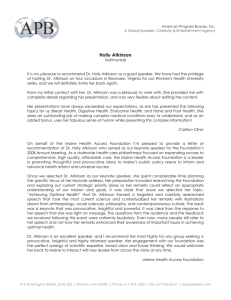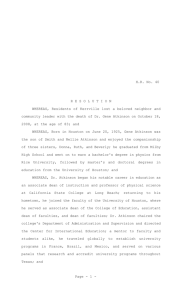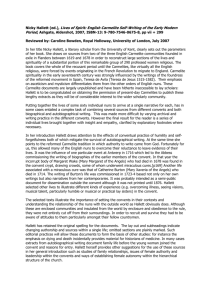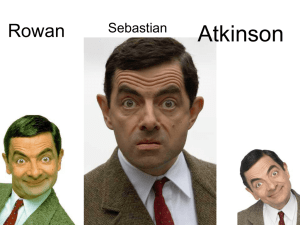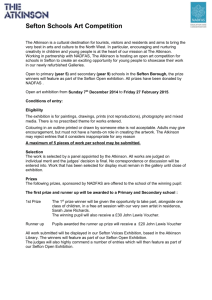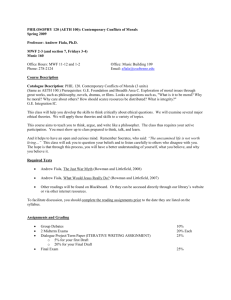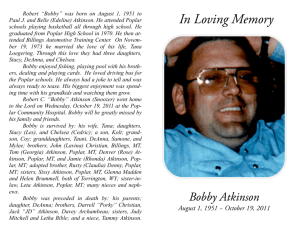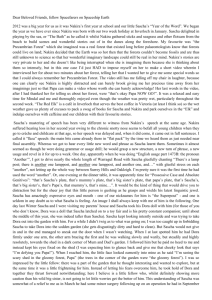EAFP 15th International Conference on Diseases of Fish and Shellfish
advertisement
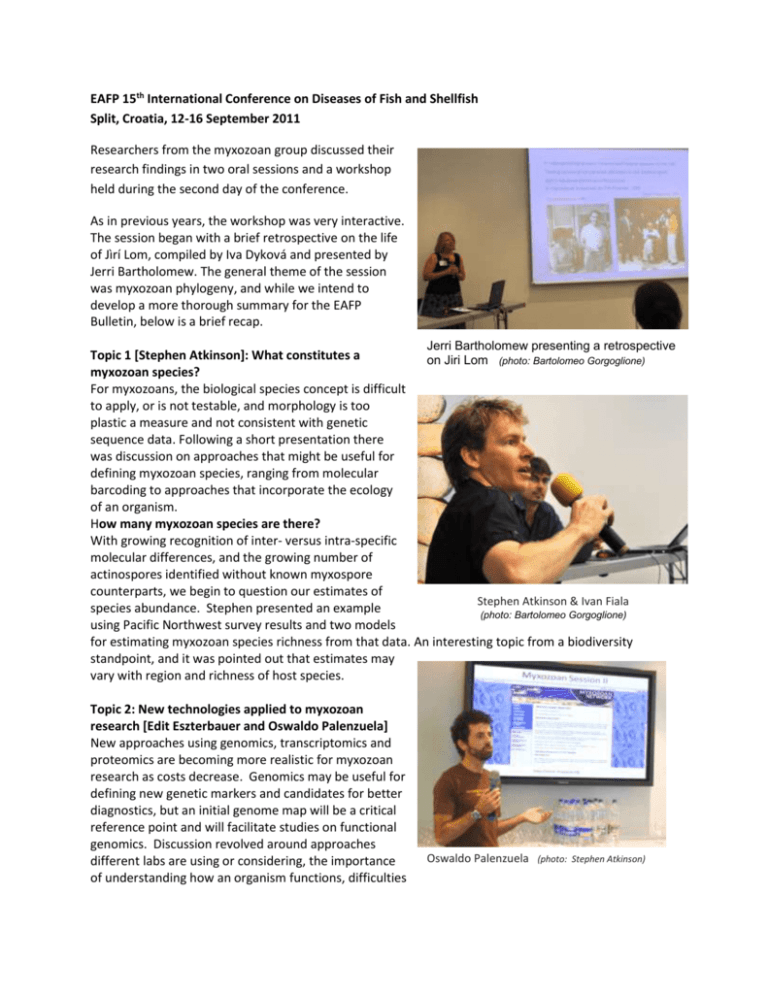
EAFP 15th International Conference on Diseases of Fish and Shellfish Split, Croatia, 12-16 September 2011 Researchers from the myxozoan group discussed their research findings in two oral sessions and a workshop held during the second day of the conference. As in previous years, the workshop was very interactive. The session began with a brief retrospective on the life of Jìrí Lom, compiled by Iva Dyková and presented by Jerri Bartholomew. The general theme of the session was myxozoan phylogeny, and while we intend to develop a more thorough summary for the EAFP Bulletin, below is a brief recap. Jerri Bartholomew presenting a retrospective Topic 1 [Stephen Atkinson]: What constitutes a on Jiri Lom (photo: Bartolomeo Gorgoglione) myxozoan species? For myxozoans, the biological species concept is difficult to apply, or is not testable, and morphology is too plastic a measure and not consistent with genetic sequence data. Following a short presentation there was discussion on approaches that might be useful for defining myxozoan species, ranging from molecular barcoding to approaches that incorporate the ecology of an organism. How many myxozoan species are there? With growing recognition of inter- versus intra-specific molecular differences, and the growing number of actinospores identified without known myxospore counterparts, we begin to question our estimates of Stephen Atkinson & Ivan Fiala species abundance. Stephen presented an example (photo: Bartolomeo Gorgoglione) using Pacific Northwest survey results and two models for estimating myxozoan species richness from that data. An interesting topic from a biodiversity standpoint, and it was pointed out that estimates may vary with region and richness of host species. Topic 2: New technologies applied to myxozoan research [Edit Eszterbauer and Oswaldo Palenzuela] New approaches using genomics, transcriptomics and proteomics are becoming more realistic for myxozoan research as costs decrease. Genomics may be useful for defining new genetic markers and candidates for better diagnostics, but an initial genome map will be a critical reference point and will facilitate studies on functional genomics. Discussion revolved around approaches different labs are using or considering, the importance of understanding how an organism functions, difficulties Oswaldo Palenzuela (photo: Stephen Atkinson) in tying function to the plethora of genetic data that results from these approaches, as well as some practical considerations regarding sample purity. Topic 3: Myxozoan evolution [Ivan Fiala] As Ivan aptly stated, life would be easier if we didn’t have genetic data, but we do. So now we know that organisms we thought were related are not. Citing several examples, he raised the question “Is it better to propose new genera or clump into existing genera? This evoked a lot of discussion on conservative approaches assuming things are different until proven the same (or vice versa), that we may need to apply different criteria to different groups, and what factors may have the greatest weight. Future directions in phylogenetic analysis should include sequencing from underrepresented groups and sequencing type specimens from each genus. Practical suggestions were offered on software packages and useful websites that we hope to provide information on from our website. Ivan Fiala gave on overview of myxozoan phylogeny (photo: Bartolomeo Gorgoglione) Some of the attendees of the Myxozoan workshop (photo: Stephen Atkinson) 8th International Symposium of Fish Parasites Viña del Mar, Chile, 26-30 September 2011 The symposium spanned three full days, a half day and an evening. Key note speeches kick-started each session and there was a 40 minute conference each day which covered morphology, molecular methods, parasites in food webs, species richness and fisheries. Posters were a significant contribution to the symposium’s content and there was a session each afternoon to share the 140 studies. There was no specific session dedicated to myxozoans - they were in the minority and scattered among sessions and within presentations - though the first full day did begin with a key note by Dr Rob Adlard, Queensland Museum, Australia, who shared his “Perspectives on the taxonomy and systematics of the Myxozoa”. His presentation focused on marine taxa, in particular Ceratomyxa and Kudoa. Rob’s PhD student, Holly Heiniger spoke further on a Kudoa from the pericardial chamber of apogonid fishes. Myxosporeans featured in Dr Michael Kent’s presentation on “Mortality of coho salmon (Oncorhynchus kisutch) associated with multiple parasite species”; despite heavy infections of coho with Myxobolus insidiosus, there was minimal parasite-associated mortality. Bob Lester, Hiroshi Yokoyama, Mike Kent, Sascha Hallett & Dr Sascha Hallett described how genotyping of Rob Adlard Ceratomyxa shasta in water samples collected during sentinel fish exposures was necessary to determine parasite density population effects for coho and Chinook salmon. Kudoa thyrsites was one of seven regularly occurring parasites identified in Dr Cecile Reed’s study on “Parasites as biological tags for South African sardines”. Posters that focused on myxozoans included: Reed et al. “Preliminary results of a population study on Ceratomyxa cottoidii from South Africa”; Kozlowiski et al. “Henneguya spp. parasitizing Characiformes from the Peixes river, State of Sao Paulo”; Müller et al. “Ultrastructural and molecular analysis of Henneguya piaractus parasite of gills of cultivated Piaractus mesopotamicus (Characidae) in Brazil”; Dykova et al. “A new Henneguya species: an agent of severe cardiac lesions in the spotted seatrout, Cynoscion nebulosus (Teleostei: Sciaenidae)”; and Yokoyama et al. “Kudoa septempunctata from the trunk muscle of cultured olive flounder (Paralichthys olivaceus) causing food poisoning of human”. Sascha Hallett & Cecile Reed For more details about the contents, a pdf of the program and abstracts is available online at: http://www.8isfp.com/Program8isfp.pdf and http://www.8isfp.com/Abstract.pdf, respectively. Jean-Lou Justine, Charlotte Schoelinck & Holly Heiniger
